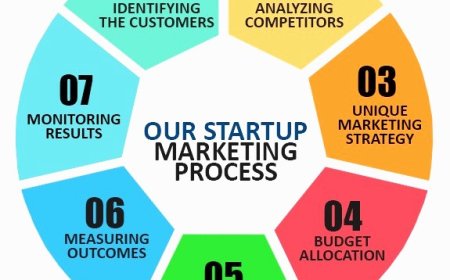What marketing and sales strategies will I employ to reach my target audience
To effectively reach your target audience, it's crucial to develop a comprehensive marketing and sales strategy. Here are some key considerations:

To effectively reach your target audience, it's crucial to develop a comprehensive marketing and sales strategy. Here are some key considerations:
-
Define Your Target Audience: Clearly identify and understand your target audience. Define their demographics, interests, needs, and preferences. This knowledge will help you tailor your marketing messages and choose the most effective channels to reach them.
-
Develop a Strong Brand Identity: Create a compelling brand identity that resonates with your target audience. This includes your brand name, logo, tagline, and overall brand personality. Consistently communicate your brand values and messaging across all marketing channels.
-
Create a Marketing Plan: Develop a well-rounded marketing plan that outlines your goals, target audience, key messaging, and strategies for reaching your audience. Include both online and offline marketing tactics to ensure maximum reach and engagement.
-
Content Marketing: Create valuable and relevant content that appeals to your target audience. This can include blog posts, articles, videos, infographics, and social media content. Focus on providing informative, educational, or entertaining content that establishes you as an industry expert and builds trust with your audience.
-
Website and Search Engine Optimization (SEO): Build a professional website that showcases your products or services. Optimize your website for search engines to improve its visibility in search results. Conduct keyword research, optimize your website's structure and content, and ensure it is mobile-friendly and user-friendly.
-
Social Media Marketing: Leverage social media platforms to connect with your target audience. Choose the platforms that align with your audience's preferences and engage with them through regular posts, sharing valuable content, and interacting with comments and messages. Consider paid advertising options on social media to expand your reach.
-
Email Marketing: Build an email list of interested prospects and customers. Send regular newsletters, updates, and promotional offers to stay connected with your audience. Personalize your emails and segment your list based on specific demographics or interests to deliver more targeted messages.
-
Influencer Marketing: Collaborate with influencers or industry experts who have a significant following and influence among your target audience. Their endorsement or promotion can help increase brand awareness and credibility.
-
Paid Advertising: Consider utilizing online advertising platforms such as Google Ads or social media advertising to reach a broader audience. Set clear goals, target specific demographics, and continuously monitor and optimize your campaigns to maximize results.
-
Public Relations (PR): Seek opportunities to gain media coverage through press releases, media outreach, or partnerships with relevant organizations. Positive media exposure can increase brand visibility and credibility.
-
Customer Relationship Management (CRM): Implement a CRM system to manage and nurture your customer relationships. Use it to track customer interactions, personalize communication, and identify opportunities for upselling or cross-selling.
-
Sales Strategies: Develop a clear sales strategy that aligns with your target audience and product or service offering. Train your sales team, establish sales targets, and define the sales process from lead generation to closing deals. Regularly review and refine your sales strategies based on feedback and market trends.
-
Customer Referrals and Reviews: Encourage satisfied customers to refer your business to others and provide positive reviews. Implement referral programs, offer incentives, or simply ask satisfied customers for testimonials to build social proof and credibility.
-
Measure and Analyze Results: Continuously track and analyze the effectiveness of your marketing and sales efforts. Monitor key metrics such as website traffic, conversion rates, customer acquisition costs, and return on investment (ROI). Make data-driven decisions and adjust your strategies accordingly.
Remember, each business is unique, so tailor your marketing and sales strategies to align with your specific goals, target audience, and industry. Regularly assess and adapt your strategies based on market trends, customer feedback, and the effectiveness of your campaigns. Consistency, creativity, and a customer-centric approach will contribute
What's Your Reaction?













































